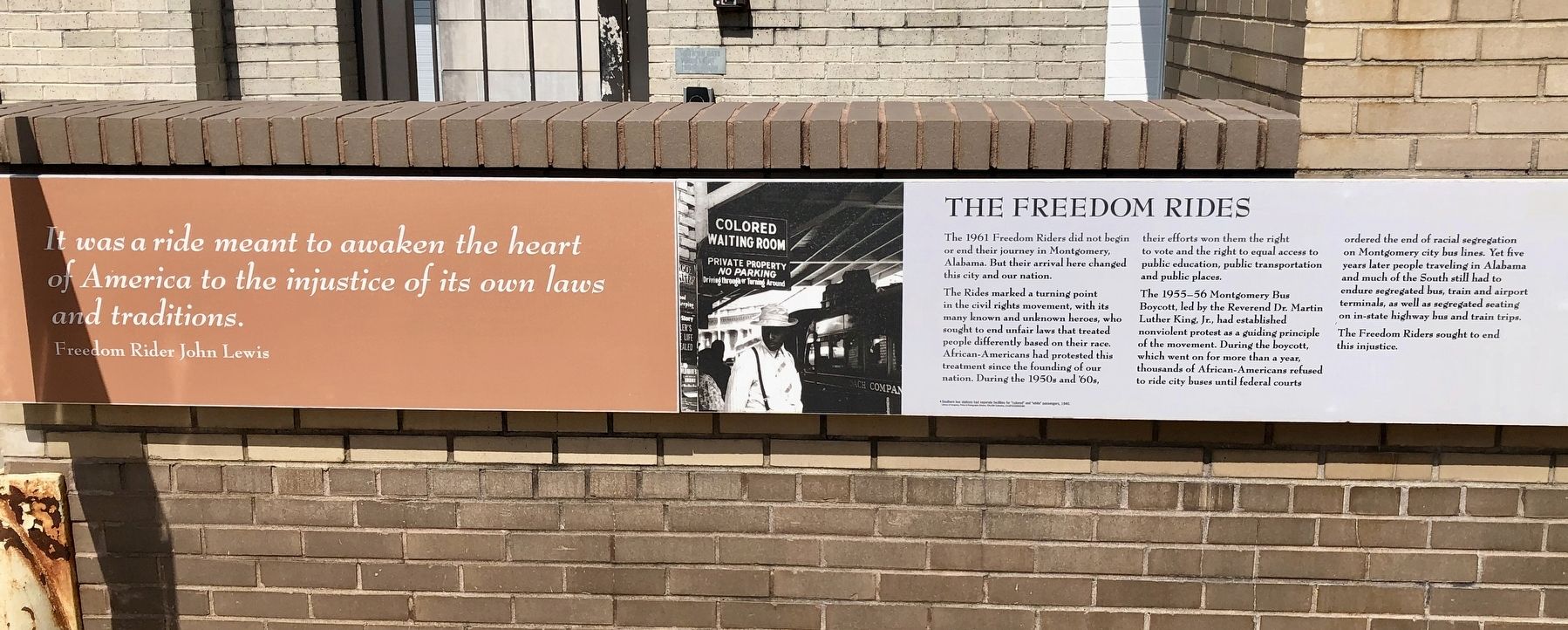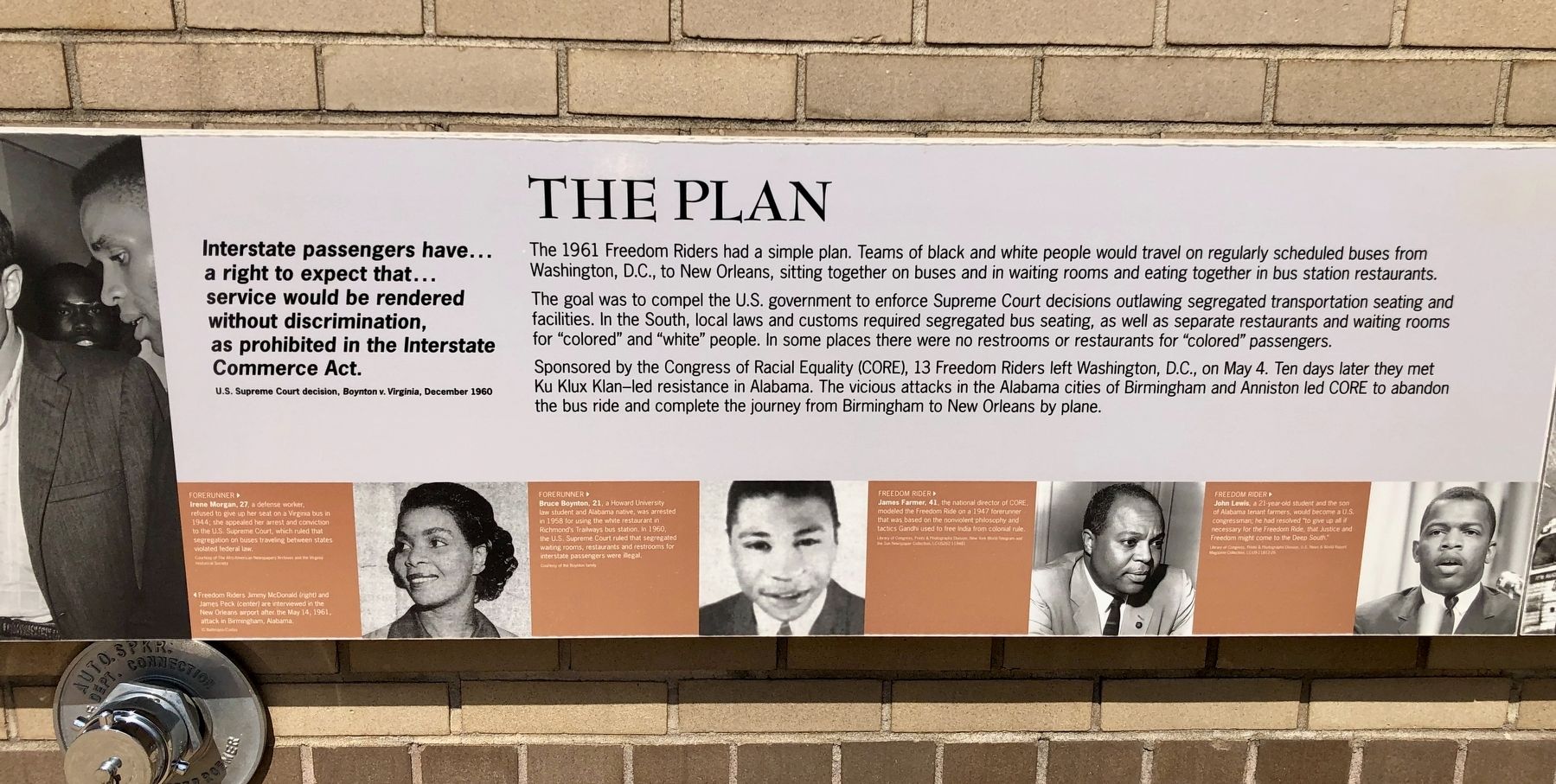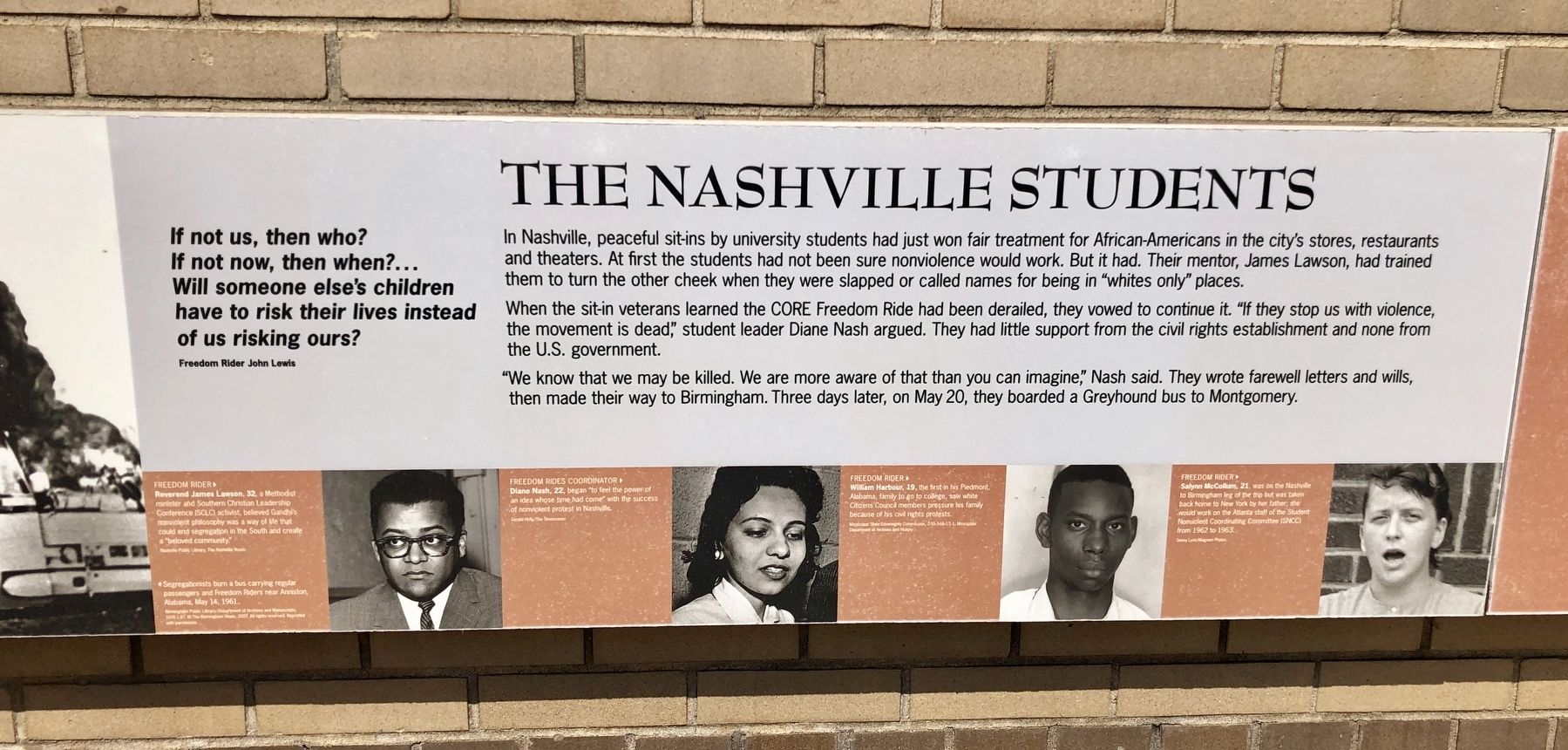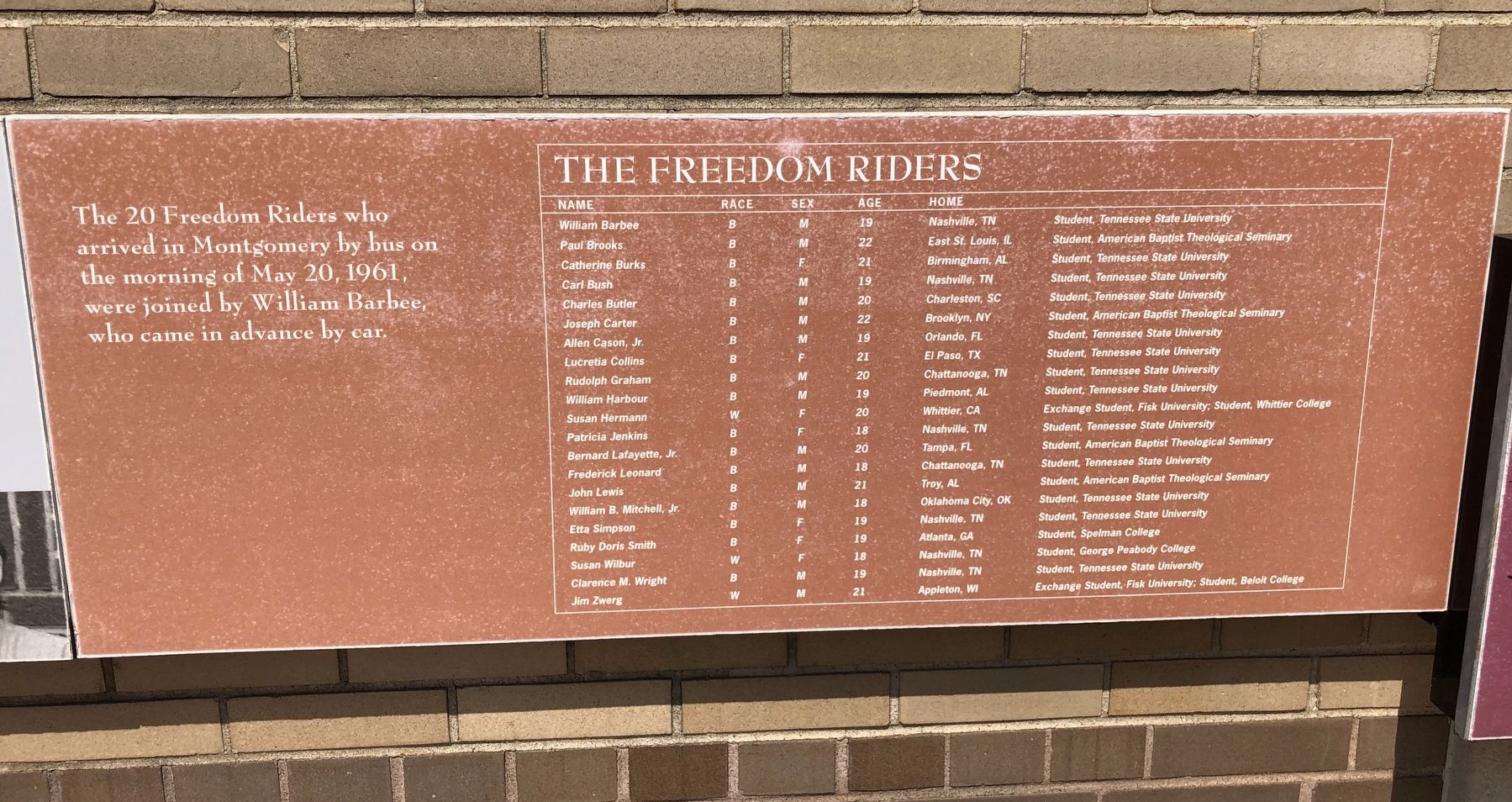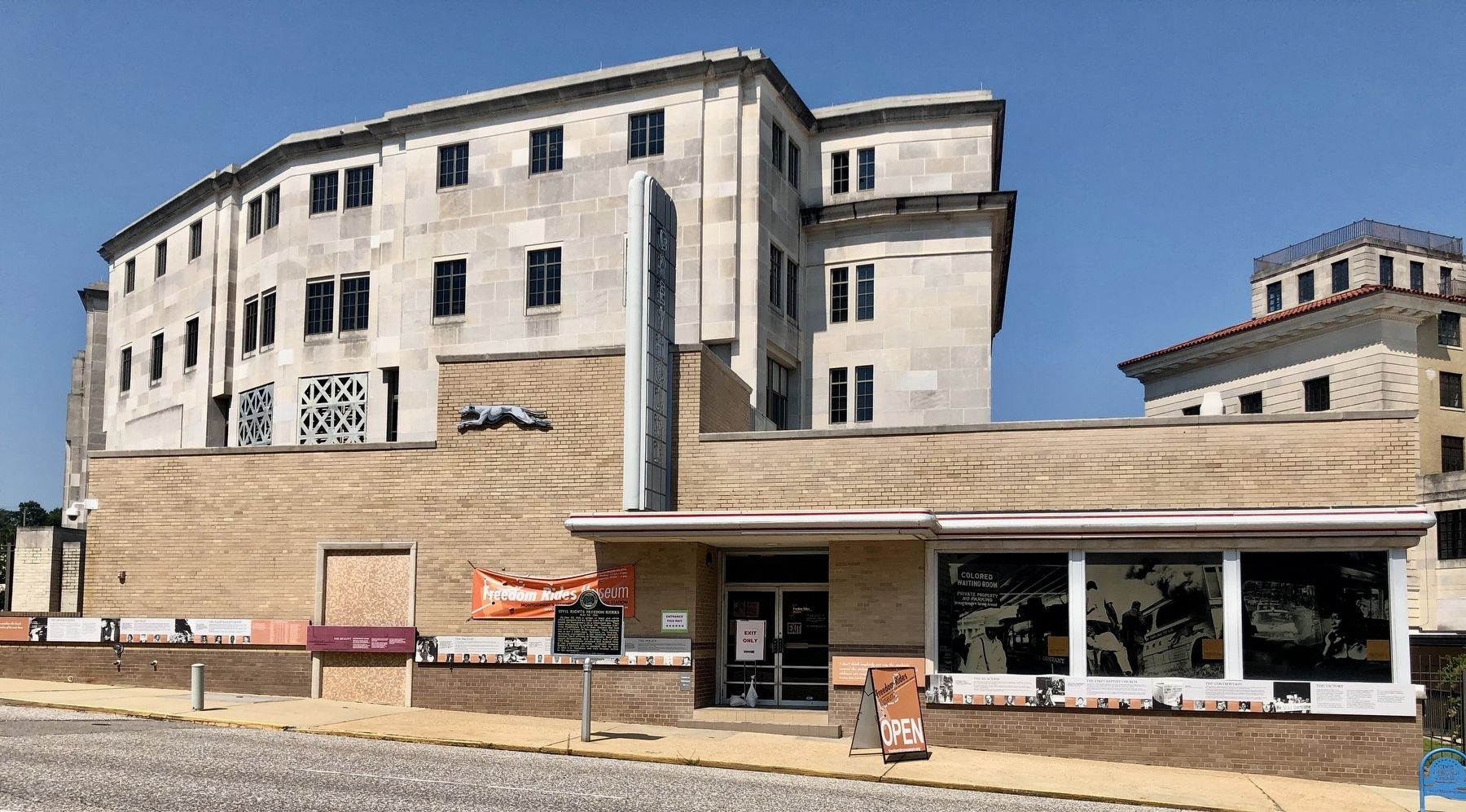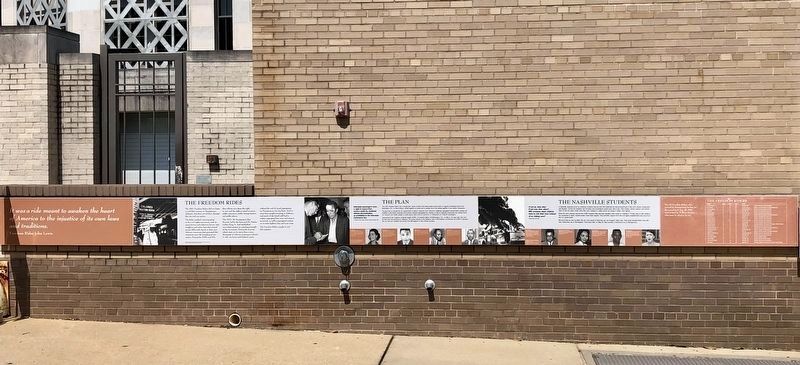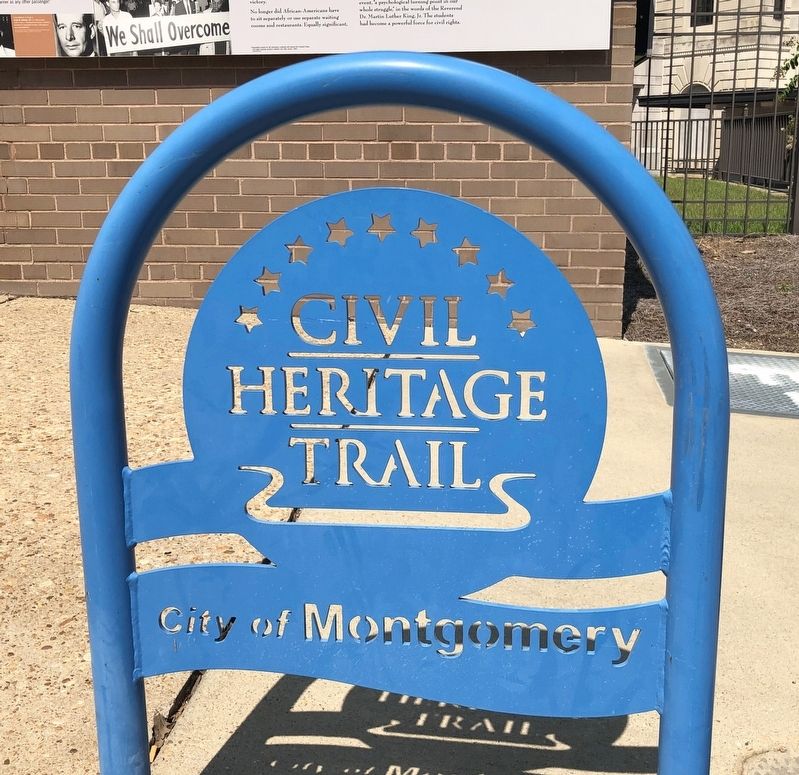Montgomery in Montgomery County, Alabama — The American South (East South Central)
The Freedom Rides
City of Montgomery
— Civil Heritage Trail —
Freedom Rider John Lewis
The 1961 Freedom Riders did not begin or end their journey in Montgomery, Alabama. But their arrival here changed this city and our nation. The Rides marked a turning point in the civil rights movement, with its many known and unknown heroes, who sought to end unfair laws that treated people differently based on their race. African-Americans had protested this treatment since the founding of nation. During the 1950s and '60s, our their efforts won them the right to vote and the right to equal access to public education, public transportation and public places.
The 1955–56 Montgomery Bus Boycott, led by the Reverend Dr. Martin Luther King, Jr., had established nonviolent protest as a protest as a guiding principle of the movement. During the boycott, which went on for more than a year, thousands of African-Americans refused to ride city buses until federal courts ordered the end of racial segregation on Montgomery city bus lines. Yet five years later people traveling in Alabama and much of the South still had to endure segregated bus, train and airport terminals, well as segregated seating on in-state highway bus and train trips.
The Freedom Riders sought to end this injustice.
U.S. Supreme Court decision, Boynton v. Virginia, December 1960
The 1961 Freedom Riders had a simple plan. Teams of black and white people would travel on regularly scheduled buses from Washington, D.C., to New Orleans, sitting together on buses and in waiting rooms and eating together in bus station restaurants.
The goal was to compel the U.S. government to enforce Supreme Court decisions outlawing segregated transportation seating and facilities. In the South, local laws and customs required segregated bus seating, as well as separate restaurants and waiting rooms for "colored" and "white" people. In some places there were no restrooms or restaurants for “colored" passengers.
Sponsored by the Congress of Racial Equality (CORE), 13 Freedom Riders left Washington, D.C., on May 4. Ten days later they met Ku Klux Klan-led resistance in Alabama. The vicious attacks in the Alabama cities of Birmingham and Anniston led CORE to abandon the bus ride and complete the journey from Birmingham to New Orleans by plane.
Freedom Rider John Lewis
In Nashville, peaceful sit-ins by university students had just won fair treatment for African-Americans in the city's stores, restaurants and theaters. At first the students had not been sure nonviolence would work. But it had. Their mentor, James Lawson, had trained them to turn the other cheek when they were slapped or called names for being in “whites only" places.
When the sit-in veterans learned the CORE Freedom Ride had been derailed, they vowed to continue it. “If they stop us with violence, the movement is dead" student leader Diane Nash argued. They had little support from the civil rights establishment and none from the U.S. government.
"We know that we may be killed. We are more aware of that than you can imagine," Nash said. They wrote farewell letters and wills, then made their way to Birmingham. Three days later, on May 20, they boarded a Greyhound bus to Montgomery.
Erected by the Alabama Historical Commission.
Topics and series. This historical marker is listed in these topic lists: African Americans • Civil Rights. In addition, it is included in the Alabama Historical Commission series list. A significant historical date for this entry is May 4, 1961.
Location. This marker has been replaced by another marker nearby. It was located near 32° 22.474′ N, 86° 18.542′ W. Marker was in Montgomery, Alabama, in Montgomery County. Marker was on South Court Street south of Adams Avenue, on the right when traveling south. Touch for map. Marker was at or near this postal address: 210 S Court St, Montgomery AL 36104, United States of America. Touch for directions.
Other nearby markers. At least 8 other markers are within walking distance of this location. Let Freedom Ride (a few steps from this marker); Civil Rights Freedom Riders (a few steps from this marker); Lomax House, 1848 (within shouting distance of this marker); Ladies Memorial Association (about 300 feet away, measured in a direct line); The Frank M. Johnson, Jr. Federal Building and US Courthouse (about 300 feet away); Montgomery County World War II Monument (about 400 feet away); Korean War (about 400 feet away); First Baptist Church (about 600 feet away). Touch for a list and map of all markers in Montgomery.
More about this marker. The markers shown on this page have all been replaced with different markers shown on marker page #224866
Related marker.
Click here for another marker that is related to this marker.
Also see . . . The Freedom Rides Museum website. (Submitted on January 6, 2021, by Mark Hilton of Montgomery, Alabama.)
Credits. This page was last revised on October 15, 2023. It was originally submitted on January 6, 2021, by Mark Hilton of Montgomery, Alabama. This page has been viewed 484 times since then and 78 times this year. Photos: 1, 2, 3, 4, 5, 6, 7. submitted on January 6, 2021, by Mark Hilton of Montgomery, Alabama.
